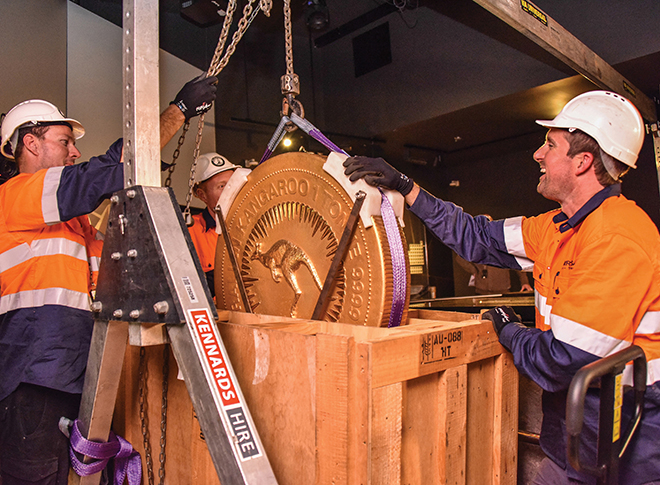
| Recent decreases in the price of gold are likely temporary, as the precious metal is often hoarded as a safe-haven asset. Pictured above is a one-tonne Australian gold coin Source: The Perth Mint |
Aggressive rate hikes and the prospect of tamer inflation have driven an 18.9% slump in the price of gold since its early March peak in the wake of Russia's Feb. 24 invasion of Ukraine, according to S&P Global Market Intelligence data.
The price of gold fell
In the short term, the market is betting the U.S. Federal Reserve increases rates by at least 75 basis points on Sept. 21. Higher interest rates and lower inflation "will likely" weigh on gold prices by increasing the opportunity cost of holding the yellow metal, which has no yield, Credit Suisse analyst Fahad Tariq said in a Sept. 13 report. Inflation was up 8.3% in August and 8.5% in July, year over year.
"Gold does better in periods of financial instability, which includes inflationary spirals. But if the market believes inflation will be brought under control [through rate hikes or a recession] — no joy for gold," David Harquail, chair of Franco-Nevada Corp., a precious metals streaming and royalty company, said in an email.

The declining price of gold may seem at odds with its safe-haven status amid rampant inflation and the deadliest conflict in Europe since World War II, but it follows soaring prices in March that came close to 2020 records. Several analysts and market observers said gold is still trading at historically high prices and predicted a return to record pricing.
"The gold price is actually pretty high and already reflects the fact that the world is in a crisis, or crises, that are getting worse," said Jeffrey Christian, managing partner of CPM Group, a precious metals consultancy. "And anybody who thinks that the price should be even higher, they probably are expecting too much of gold."
Christian forecasts gold prices trading in a band between $1,700/oz and $2,000/oz through most of 2023, but for a recession to hit in 2024 and spur gold higher.
"And at that point, the gold price moves above $2,000/oz in a more sustained and forceful way and toward $2,500/oz-$2,600/oz in the longer term," Christian said.
Some analysts also noted that gold is doing what a safe-haven asset should amid economic crisis and geopolitical uncertainty, by retaining value on a long-term basis, outperforming equities and showing strength in non-U.S. currencies.
Gold could "trade considerably higher" should the U.S. dollar weaken amid a recession and inflation hold above 3% or so next year, Saxo Bank analyst Ole Hansen said in direct messages on Twitter.
"Investors, in other words, continue to see gold as a hedge against a policy mistake, a situation where inflation remains stubbornly high while the growth outlook deteriorates," Hansen said.
S&P Global Commodity Insights produces content for distribution on S&P Capital IQ Pro.



